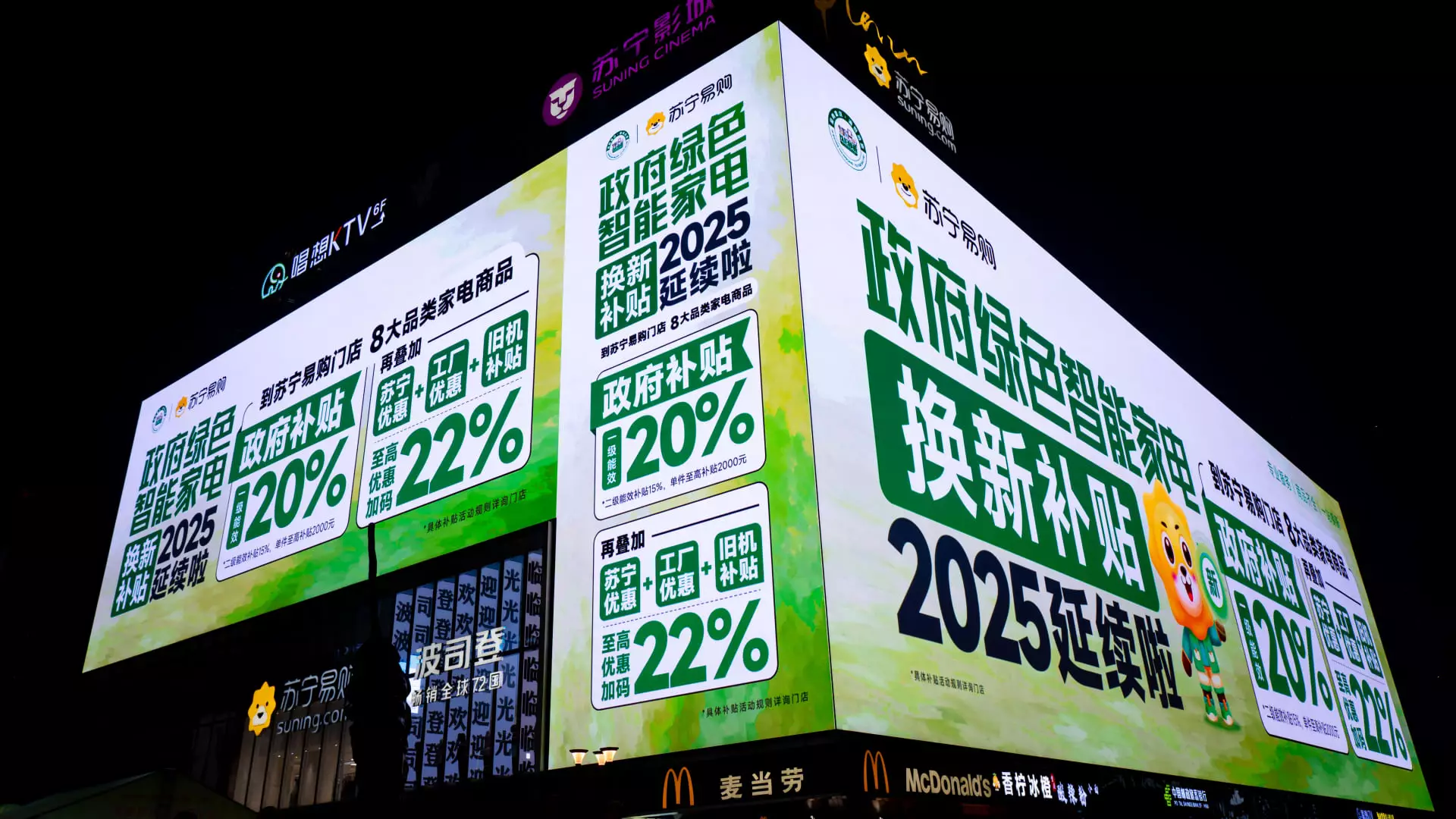China’s economy embarked on a new trajectory as it ushered in the year 2025, marked by an expansive consumer stimulus initiative aimed at revitalizing a market that has faced challenges in recent years. While the government has opted not to distribute direct cash payments to consumers, it has turned its focus to incentivizing purchases through a structured subsidy program targeting specific home appliances. This article delves into the details of the stimulus, its expected beneficiaries in the stock market, and the broader implications for economic recovery.
On the heels of a sluggish consumer market, the Chinese government introduced an enhanced consumer stimulus plan which includes expanding the categories of subsidized home appliances. Originally stemming from a selective list, recent announcements have included items such as microwaves, water purifiers, dishwashers, and rice cookers, offering subsidies that can reach up to 20% off the retail price. The overall strategy aims to revitalize consumer spending while also supporting domestic manufacturers.
Leading industry players, Midea, Gree, and Haier, are poised to reap the benefits of this initiative. According to equity analyst Jeff Zhang from Morningstar, these companies are likely to experience sales growth as a direct result of consumer incentives. Recognized as the top three air conditioner manufacturers in China by last year’s revenue statistics, they have seen substantial stock increases, with Midea’s shares climbing nearly 38% in 2024. The forecast is promising, hinting at potential gains of 26% for Midea’s shares based on set price targets.
Investment firms such as Citigroup have echoed similar sentiments, affirming their buy ratings on the aforementioned stocks. They project even more ambitious price targets than Morningstar, particularly for Gree, Haier, and Midea. The optimism reflected in these projections stems from a corporate landscape that is increasingly reliant on consumer spending for growth. In light of this renewed focus on home appliances and electronics, retailers expect heightened market activity.
However, it is important to point out the underlying vulnerabilities that could inhibit potential growth. Analysts at Citigroup highlighted risks such as intensified price wars and ongoing malaise in the real estate market that may dampen consumer confidence and spending. Indeed, official data released recently indicated a decline in home appliance prices, showcasing the challenges faced by manufacturers in stimulating demand amidst a tepid post-pandemic recovery.
The government has committed a substantial budget towards these subsidies, allocating approximately 81 billion yuan ($11.05 billion) for the current year alone. This financial backing is vital, particularly as it aligns with the timing of major consumer events such as the Spring Festival, ensuring that families are engaged in spending during a culturally significant period.
China’s e-commerce platforms have exhibited resilience, with JD.com emerging as a favored beneficiary of the stimulus initiative, thanks to its strong supply chain and prior success with trade-in programs. Analysts believe that JD.com’s strategic position enables it to leverage this opportunity effectively and continue its momentum. In contrast, while Alibaba is also positively positioned, the competition remains fierce with platforms like Pinduoduo potentially lagging in relative gains.
While immediate reactions to the stimulus measures herald a promising outlook for specific segments of the market, the long-term implications are more nuanced. As consumer habits evolve, companies must adapt not only to current demands but also consider future economic shifts. The interplay between government initiatives and market dynamics will continue to shape consumer behavior and investment strategies in China.
China’s economic policy in 2025, characterized by an expanded consumer stimulus program, positions specific home appliance manufacturers and e-commerce platforms favorably. However, the potential for growth will be tempered by ongoing challenges in consumer demand, competitive pricing, and external economic pressures. Investors and industry participants alike must remain vigilant, closely monitoring these developments as they unfold. The success of this stimulus program is not only pivotal for the companies directly affected but also critical for the overall recovery of the Chinese economy in the years to come.

